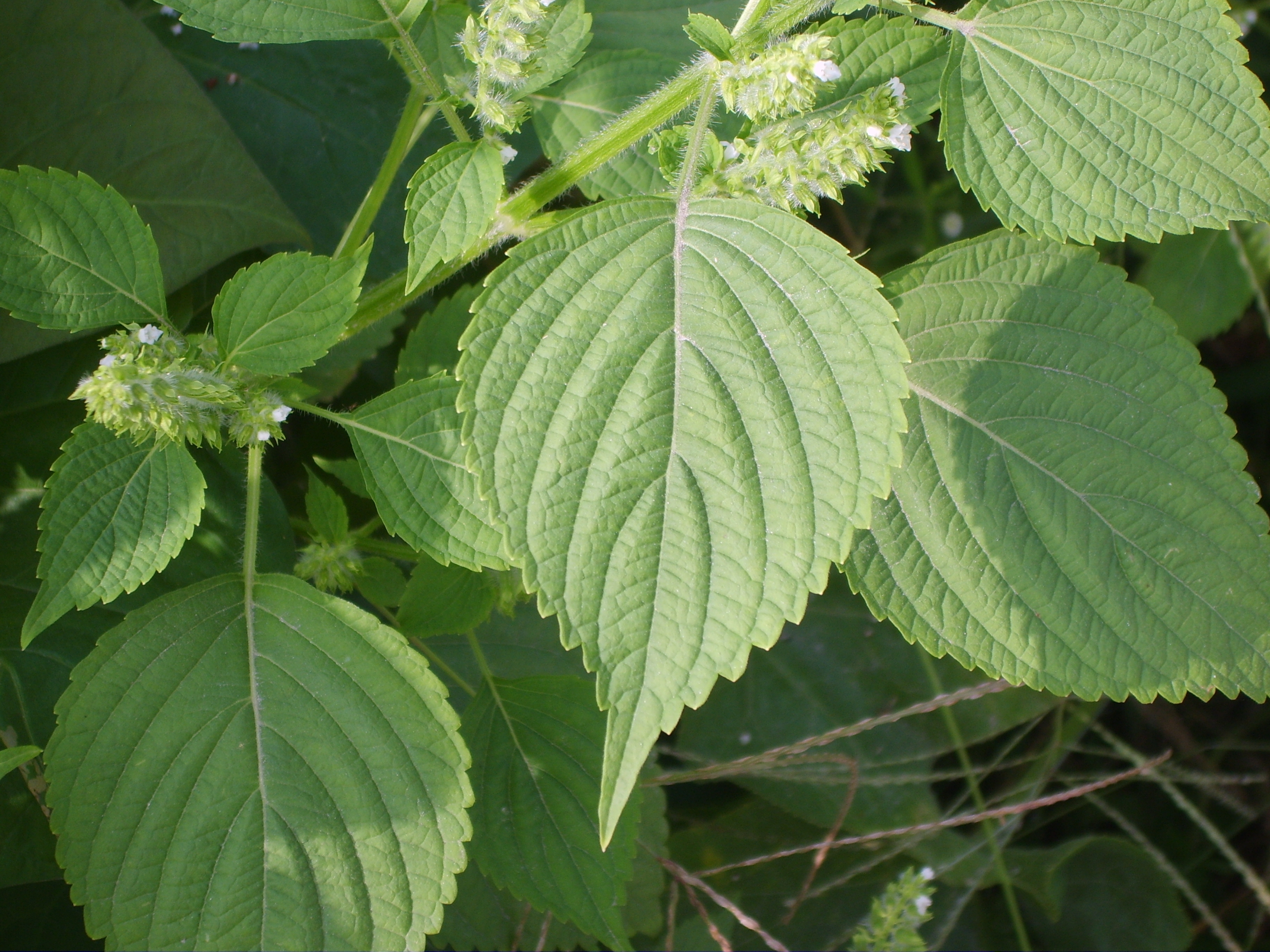Perilla frutescens, or sudza, is an oilseed crop, sometimes used as a succulent vegetable crop, in the Lamiaceae or Labiatae family.
Other names: shiso, beefsteak plant.

Source: commons.wikimedia.org©Dalgial (CC BY-SA 3.0)
Economic importance
Perilla is an annual aromatic herb widely cultivated in East Asia and Japan for its leaves and edible seed oil. It is native to Southeast Asia, but is now widely domesticated.
Perilla seeds contain 40-45% fast drying technical oil. Perilla oil is used in the automotive, shipbuilding, electrical, paint and varnish industries.
Perilla cake serves as a concentrated feed for farm animals.
Cultivation areas and yield
Perilla is grown in China, Korea and Japan.
In Russia, it is grown in small areas in the Primorsky Territory.
Seed yield reaches 1.0-1.2 t/ha.
Botanical description
Perilla frutescens (L.) Britt. (syn. Perilla ocymoides L., Ocimum frutescens) is an annual plant of the Labiatae family.
The root penetrates to a depth of 1 m.
The stem is erect, branched, tetrahedral. Plant height is 0.9-1.5 m.
Leaves are broadly ovate, up to 12 cm long, serrated edges, on long petioles, usually brownish-purple or bronze in color or may be mottled; some varieties are green. The leaves are valued for their curry-like aroma.
Inflorescence – brush. The flowers are small. The corolla is double-lipped. 4 stamens. The ovary is four-celled. Self-pollinator, also cross-pollinated by insects.
The fruit breaks up into 4 small round nuts, with a mesh surface. The weight of 1000 seeds is 2-3.5 g.
Biological features
Perilla is demanding on growing conditions.
The minimum temperature for seed germination is 7-8 °C, the optimum temperature is 10-12 °C. Plants are able to withstand frosts down to -1 … -2 °С. Adult plants do not tolerate low autumn temperatures well.
High temperatures in the flowering and seeding phases lead to flower drop, incomplete seeding, which reduces the yield.
Moisture-loving plant. The greatest need for moisture falls on the flowering phase.
Perilla is a short daylight plant. Favorable low light intensity.
Structural chernozem and alluvial soils of river valleys are optimal.
Vegetation
The development of perilla plants from germination to the beginning of branching of the stem proceeds slowly, then growth accelerates sharply.
The growing season is 120-150 days. With the advancement of crops to the north, the duration of the growing season is lengthened.
Crop rotation
The best predecessors of perilla in crop rotation are winter cereals, row crops and legumes.
Fertilizer system
Perilla responds well to fertilization.
The use of manure at the rate of 30 tons per 1 ha leads to an increase in yield up to 2 times.
Approximate recommended application rates of mineral fertilizers – N45P60K40 kg/ha.
Tillage system
Tillage for the railing should be carried out carefully and includes:
- early spring plowing;
- at least two cultivations followed by harrowing;
- pre-sowing soil compaction.
Sowing
Seeds with a purity of at least 95% and a germination rate of at least 75% are suitable for sowing. Additionally, they are treated with a 65% solution of fentiuram at the rate of 3 kg of the drug per 1 ton of seeds.
Sowing perilla is carried out when the topsoil is warmed up to 12 °C.
The sowing method is wide-row with a row spacing of 60 cm.
Seeding rate – 5-8 kg/ha.
The depth of sowing seeds is 3-4 cm.
Crop care
Crop care includes harrowing, which is carried out at the beginning of germination, and 3-4 inter-row treatments.
Harvest
When ripe, perilla seeds crumble heavily.
Harvesting is started before the seeds begin to ripen, when about 20% of the seeds acquire a characteristic color.
Cleaning is usually carried out in a two-phase way.
Seeds with a moisture content of not more than 9% are laid for storage.
Sources
Crop production / P.P. Vavilov, V.V. Gritsenko, V.S. Kuznetsov and others; Ed. P.P. Vavilov. – 5th ed., revised. and additional – M.: Agropromizdat, 1986. – 512 p.: ill. – (Textbook and textbooks for higher educational institutions).
World vegetables: principles, production, and nutritive values / Vincent E. Rubatzky and Mas Yamaguchi. — 2nd ed. 1997.